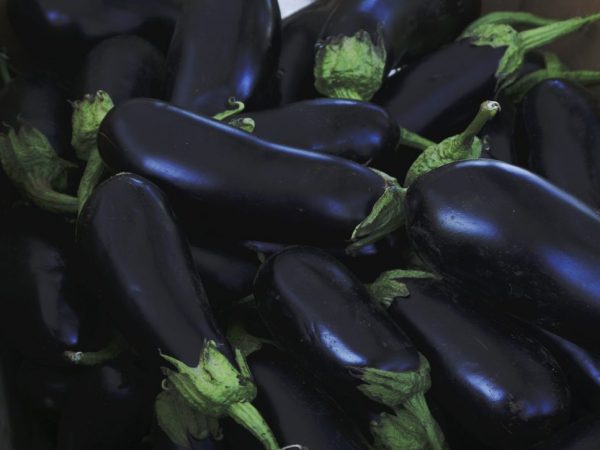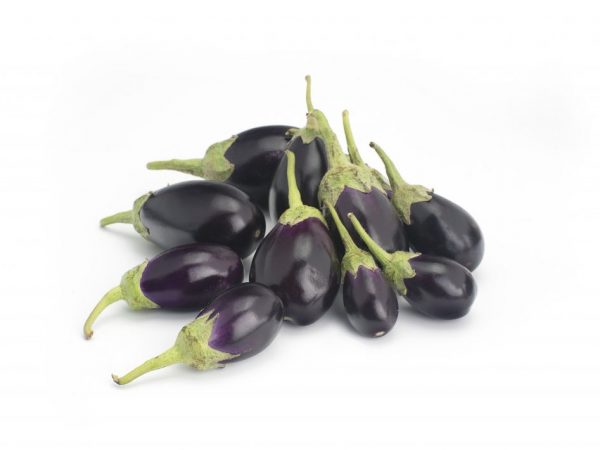Description of eggplant Japanese dwarf
Eggplant is a crop that requires careful maintenance. It is difficult to get a healthy harvest in climatic conditions unsuitable for a vegetable. However, Japanese dwarf eggplant is suitable for growing in cold regions. The variety is considered one of the easiest to plant.

Description of eggplant Japanese dwarf
Characteristics of the variety
- Medium early.
- high-yielding.
- Resistant to temperature changes.
- Disease resistant.
- Possesses good taste, there is no bitterness.
According to the description, the variety does not require a specific location in the garden. The leaves protect the bush from exposure to sunlight; planting in the shade or partial shade is not required. Suitable for growing both outdoors and in a greenhouse. The flowering season is July-August.
The variety Japanese dwarf is similar in all characteristics to the variety Korean dwarf. However, Korean culture does not take root well in cold regions.
The fruit is dark purple in color, cylindrical or club-shaped. The plant is compact, the height is 60 cm. The fruit is oblong, curved, can reach 25 cm in length.
Eating and benefits
According to the description, the fruits of the species are suitable for eating in boiled, fried, stewed and baked forms, as well as for canning.
Eggplant is considered a dietary vegetable and is suitable for people with various allergies or dieting. Its high content of potassium, iron, manganese and magnesium make it an essential medicine. The Japanese dwarf helps to normalize the work of the heart, improve the general condition of the joints, cleanses blood vessels of cholesterol and has a low calorie content. Indispensable for obese people.
It is not advised to eat the fruits overripe and in large quantities, especially for people with kidney or liver diseases. Contains components that contribute to the rapid regeneration of damaged tissues of the human body.
Growing varieties
Transplanting
Seedlings do not tolerate transplanting well, so gardeners refuse to pick. Seed cultivation is best done in individual pots, 10x10 cm in size.

Cooking the land and seedlings
To plant seedlings in the ground, you should:
- Plant seeds in different containers to minimize transplant damage.
- Plant seedlings in moist soil, no more than 1-1.5 cm, in a place illuminated and warmed by the sun. At night, the seedlings are taken out to a cool place to strengthen the immune system.
- Before planting, organic fertilizers must be applied to feed the seedlings. For example, mix 1 kg of mullein with a bucket of water).
Loamy soils with humus are suitable for planting, peat and peat bog soils are not suitable. Planting seedlings should be done in moist soil, after adding organic fertilizers.
Formation of bushes
As soon as the young bush reaches a height of 25-30 cm, the upper part of the main stem is removed.This allows the lateral shoots to develop and strengthen. After formation for the eggplant, you need to rest for 15 days for the plant to take root in a new place. During this period, they do not carry out procedures for caring for the plant and do not open the greenhouse. Periodically, yellowed leaves, dead fruits and non-fruiting shoots are removed from the bushes.
For stability, the bush is tied with a cloth to a support, which forms the desired shape and size.
Greenhouse cultivation
The optimal greenhouse temperature is considered to be 25-28 ° C. Despite the adaptability to various conditions, the greenhouse must be ventilated. Drafts must not be allowed. It is advised to always close the greenhouse door at night.
Watering and feeding
Eggplants love moisture, but the Japanese dwarf also tolerates short-term droughts, which makes it possible not to be in the garden for a long time.
As a top dressing, use ash (1 glass of ash per 1 liter of boiling water) or fertilizer for seedlings of vegetable crops from the store.
Diseases and pests
This crop is described as resistant to various diseases and pests. In the case of a single bush disease, it is advised to process the loosened soil with wood ash.
Conclusion
The Japanese dwarf eggplant variety is suitable for both experienced and novice gardeners. Due to its unpretentiousness, it is in great demand among summer residents who do not have the opportunity to be in the garden all the time.


